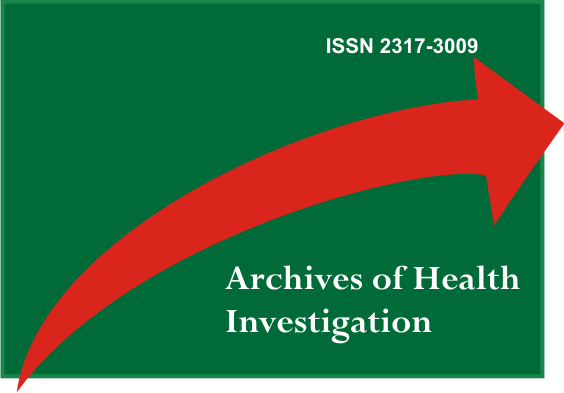Development of temporomandibular ankylosis after diagnosis of Jacob’s disease: clinical and tomographic assessment
DOI:
https://doi.org/10.21270/archi.v9i5.4778Resumo
Jacob's disease is a rare condition that consists of the formation of a pseudo joint structure between the mandibular coronoid process and the zygomatic bone, resulting in limited mouth opening. The disease is difficult to diagnose and etiology is uncertain. This article describes a clinical case of a 6-year-old child with limited mouth opening, which resulted in the formation of a temporomandibular ankylosis leading to complete immobility due to delayed diagnosis and treatment of the disease. A review of this pathology and the most precise imaging exams are discussed for the early and differential diagnosis of the disease.
Descriptors: Ankylosis; Temporomandibular Joint; Temporomandibular Joint Disorders.
Referências
- Wang WH, Xu B, Zhang BJ, Lou HQ. Temporomandibular joint ankylosis contributing to coronoid process hyperplasia. Int J Oral Maxillofac Surg. 2016;45(10):1229-33.
- Zhong SC, Xu ZJ, Zhang ZG, Zheng YH, Li TX, Su K. Bilateral coronoid hyperplasia (Jacob disease on right and elongation on left): report of a case and literature review. Oral Surg Oral Med Oral Pathol Oral Radiol Endod. 2009 Mar;107(3):e64-7.
- Coll-Anglada M, Acero-Sanz J, Vila-Masana I, Navarro-Cuéllar C, Ochandiano-Caycoia S, López de-Atalaya J, Navarro-Vila C. Jacob's disease secondary to coronoid process osteochondroma. A case report. Med Oral Patol Oral Cir Bucal. 2011;16(6):e708-10.
- Yesildag A, Yariktas M, Doner F, Aydin G, Munduz M, Topal U. Osteochondroma of the coronoid process and joint formation with zygomatic arch (jacob disease): report of a case. Eur J Dent. 2010;4(1):91-4.
- Çorumlu U, Kopuz C, Demir MT, Pirzirenli ME. Bilateral elongated mandibular coronoid process in an Anatolian skull. Anat Cell Biol. 2016;49(3):217-20.
- Choi JG, Kim SY, Perez-Atayde AR, Padwa BL. Bilateral coronoid process hyperplasia with pseudocartilaginous joint formation: Jacob disease. J Oral Maxillofac Surg. 2013;71(2):316–21.
- Losa-Muñoz PM, Burgueño-García M, González-Martín-Moro J, Sánchez-Burgos R. Osteochondroma of coronoid process: a rare etiology of jacob disease. Craniomaxillofac Trauma Reconstr. 2014;7(4):306-9.
- Escuder i de la Torre O, Vert Klok E, Marí i Roig A, Mommaerts MY, Pericot i Ayats J. Jacob's disease: report of two cases and review of the literature. J Craniomaxillofac Surg. 2001;29(6):372-76.
- Hernández-Alfaro F, Escuder O, Marco V. Joint formation between an osteochondroma of the coronoid process and the zygomatic arch (Jacob disease): report of case and review of literature. J Oral Maxillofac Surg. 2000;58(2):227-32.
- Sreeramaneni SK, Chakravarthi PS, Krishna Prasad L, Raja Satish P, Beeram RK. Jacob's disease: report of a rare case and literature review. Int J Oral Maxillofac Surg. 2011;40(7):753-57.
- D'Ambrosio N, Kellman RM, Karimi S. Osteochondroma of the coronoid process (Jacob's disease): an unusual cause of restricted jaw motion. Am J Otolaryngol. 2011;32(1):52-4.
- Shackelford RT, Brown WH. Restricted jaw motion due to osteochondroma of the coronoid process. J Bone Joint Surg Am. 1949;31A(1):107-14.
Downloads
Não há dados estatísticos.
Downloads
Publicado
2020-04-20
Como Citar
Avelar, R. L., Martins Neto, R. S., Gaspar, B. da S., Praxedes Neto, R. A. de L., & Silva, P. P. G. B. (2020). Development of temporomandibular ankylosis after diagnosis of Jacob’s disease: clinical and tomographic assessment. ARCHIVES OF HEALTH INVESTIGATION, 9(5), 426–428. https://doi.org/10.21270/archi.v9i5.4778
Edição
Seção
Relatos de Caso


